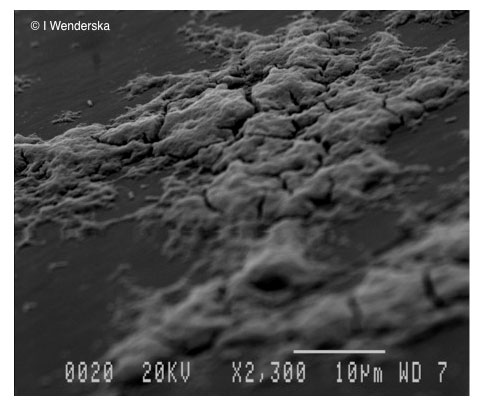Exopolysaccharides are a major component of many microbial biofilms. These long sugar polymers are often found both associated with the bacterial or fungal cell surface and as a secreted form. Exopolysaccharide biosynthesis is a multistep process that requires the polymerization of nucleotide-sugar precursors, and transport across either the cytoplasmic or plasma membrane. In the case of Gram-negative bacteria the polymer also needs to traverse the periplasm and be exported from the cell. The properties of the polymer are frequently modulated by chemical modification, which can occur either in the periplasm or extracellular space.
Ongoing projects seek to determine the molecular mechanism(s) involved in the biosynthesis of:

Micrograph of P. aeruginosa biofilm growing on an inert surface. The bulk of the biofilm matrix is composed of exopolysaccharides.
